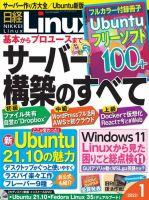Let's build a container environment with "Ubuntu on WSL 2 on Windows 11": Experience "real Linux" on Windows 11
This article is limited to members.You can see everything by registering (free).
With the spread of the idea of "I want to develop using MacOS and UNIX -based OS", many companies can use Mac with MacOS as a company PC.On the other hand, many companies are required to use Windows due to compatibility issues with business systems.What is attracting attention is "WSL" (Windows Subsystem for Linux), which can use Linux on Windows.By using the WSL, you will be able to proceed with Linux with Linux while keeping the compatibility with the business system on Windows.
Prior to the appearance of the WSL, run Linux using virtualization software such as "VMware" and "VirtualBox", or use tools such as "Cygwin", which transplanted Linux commands to Windows.There was a method.However, the former was an issue because the size of the overhead was to install Linux after running virtualization software on Windows, a host OS.The latter was to use Linux to use it on Windows, and there was a problem in terms of function.

The WSL also uses a virtual machine mechanism, but it uses "Hyper-V", which has a high affinity with Windows, so you can execute a real Linux, unlike a tool like Cygwin (Hyper.The use of -V is from the WSL 2 described later).
WSL, WSL 2, WSLG difference
The WSL appeared in 2016, but "WSL 2" was announced in 2019, and "WSLG" was announced in 2021.The version has been upgraded, but where are the differences?
WSL and WSL 2 run the Linux distribution on Windows, but the mechanism is different.The WSL is running Linux on Windows by adding a unique function to convert Linux system calls to Windows Kernel.When viewed from Linux, the Windows kernel looks like a Linux kernel.
WSL 2 runs Linux using Hyper-V.Hyper-V is a virtual machine mechanism (hypervisor) developed by Microsoft, has a high affinity with Windows, and has an overhead compared to VMware and VirtualBox.
WSLG is a real Linux that runs on Windows and is a function that allows you to execute the Linux GUI application.The major difference is that the Linux desktop is opened on Windows, and the GUI application is not executed, but the Linux GUI application is launched and displayed as a Windows window.